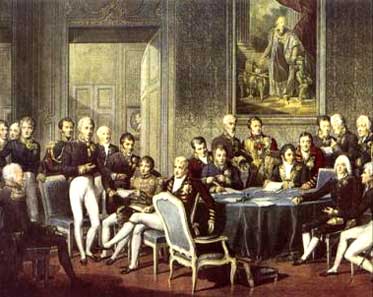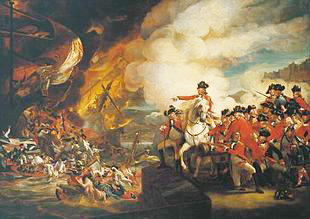
The Siege of Gibraltar
Ideally in any military tactic, all people in charge must agree on a plan of action if the campaign is to be successful. If this is not the case it is very likely to fail, just like it happened on the the second siege of Gibraltar, after the Utrecht treaty. It was an excellent lesson for the Spanish.
Background

Felipe V was confirmed as King of Spain in the Utrecht Treaty (1713) after the Spanish Wars of Succession. In the same treaty he had ceded Gibraltar to the British. But ever since, it was his ambition to recover this land near the southern tip of the Iberian Peninsula.
During the negotiations of the marriage of Infant Don Carlos and Maria Teresa, daughter of the Austrian Emperor, the issue of Austria's aid to recuperate Menorca and Gibraltar was treated and the Vienna Treaty was signed in 1725, much to King George I of England' chagrin.
The British then decided to ally themselves with France (talk about changing teams) and sign the Hannover Treaty (1726) as they were worried about Spain's rearmament and their renewed interest in their American colonies. They also blocked the city of Portobelo (Panama).
The Siege of Gibraltar
In 1726 King Felipe V ordered the troops to descend to Gibraltar. The military engineer Jorge Próspero de Verboom is appointed Chief Engineer while the troops are in charge of Cristóbal de Moscosos, count of las Torres de Acorrín. The Siege began in 1727 with a force of 30 infantry battalions, 900 horses, 100 canons among others.

From the first moment the relationship between Verboom and de las Torres was a strained one. Apparently their differences originated a few years back in Pamplona and had deepened over time and for this reason de las Torres rejected the chief engineer's proposals for the Siege of Gibraltar, and thus the problems began.
The Siege of Gibraltar began in 1727. The first attempt by the Spaniards took place under the hill. In the Gibraltar rock had always proved to be pretty much unassailable. However they dug trenches and the British destroyed them by throwing an incredible amount of stones. Then they tried from the other side of the Gibraltar isthmus and failed also. Verboom disaproved of both these tactics as the Bristish ships gave provisions to the colony and Verboom was aware that the only way to beat them would be with marine superiority. In May 1727 de las Torres asked the opinion of two director engineers: Francisco Montaigu and Diego Bordik, both of whom supported Verboom's assessment.
Peace
Luckily it never got to the point of open war, unlike other episodes of the conflicts surrounding Gibraltar, and André-Hercule de Fleury, the French chief minister French Prime Minister Fleury, a pacifist, negotiated a peace agreement between both countries, signed in May 1727. In July of the same year the siege of Gibraltar ended.
.